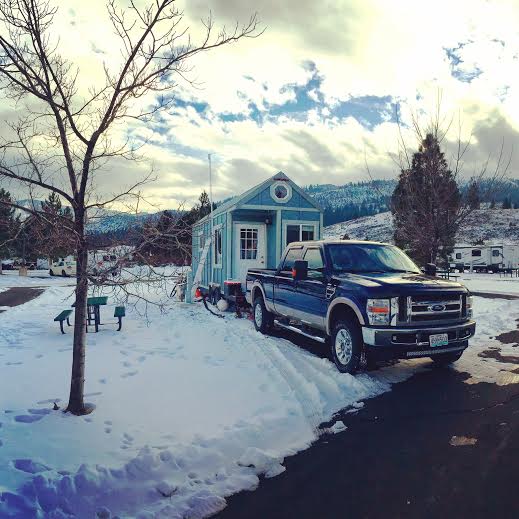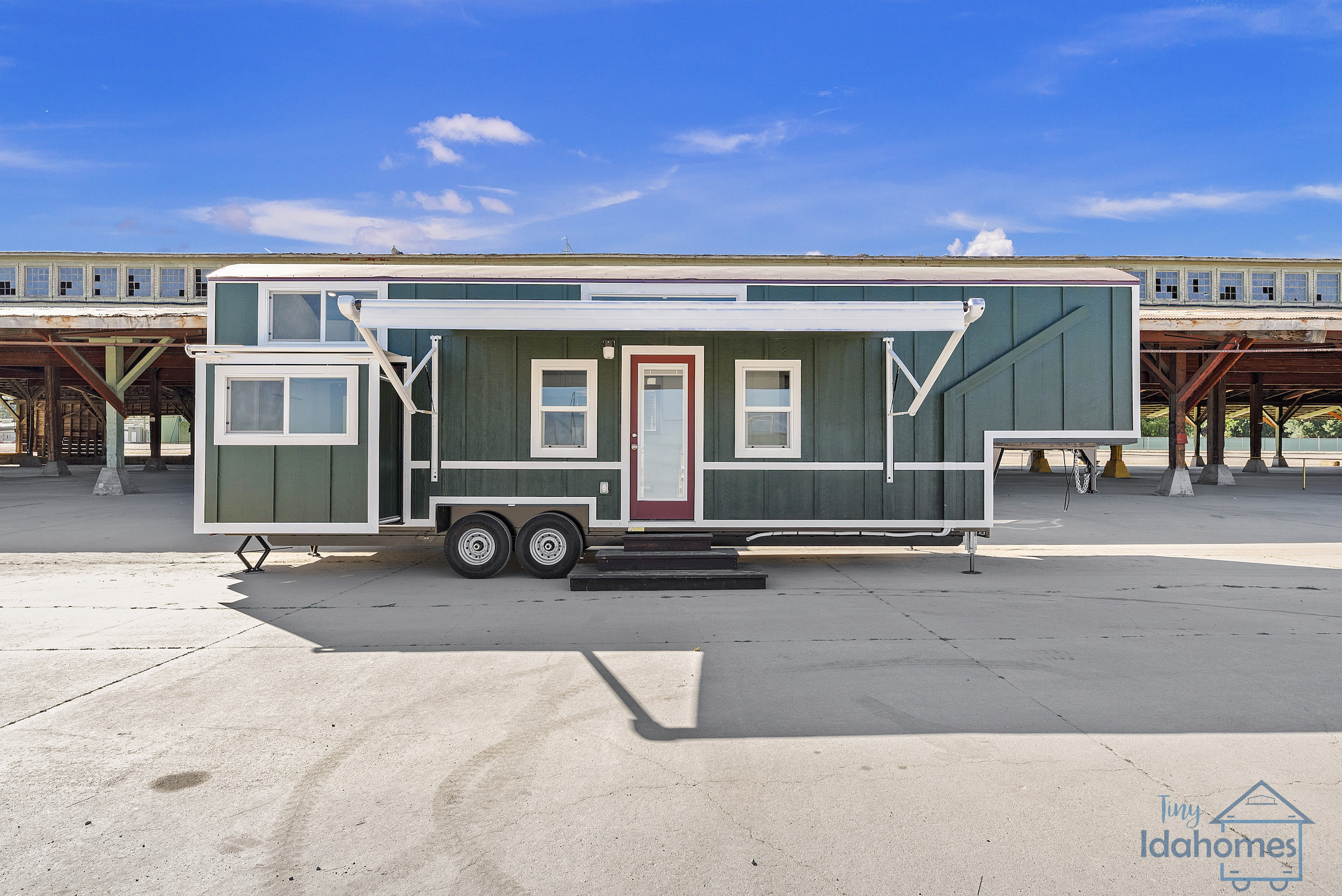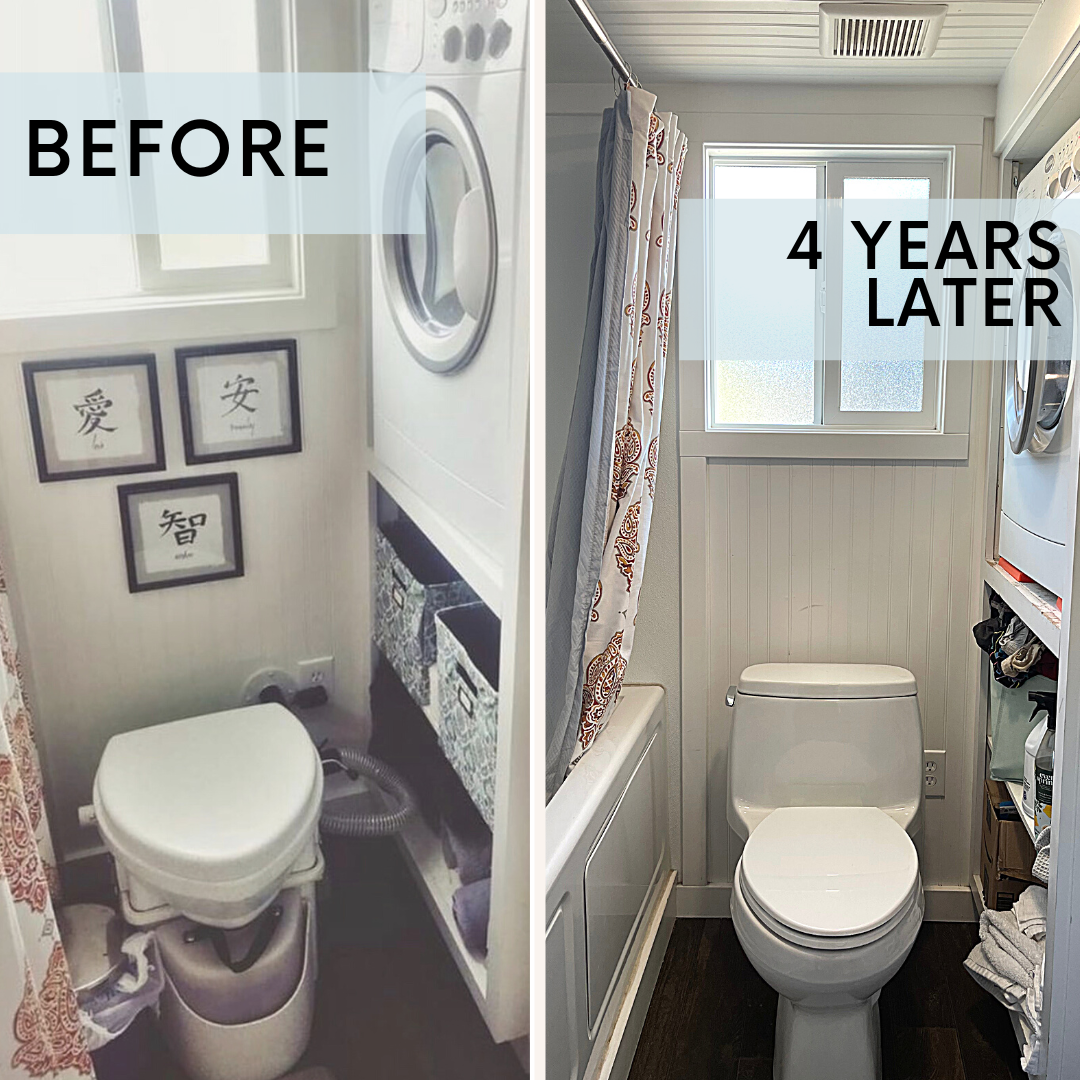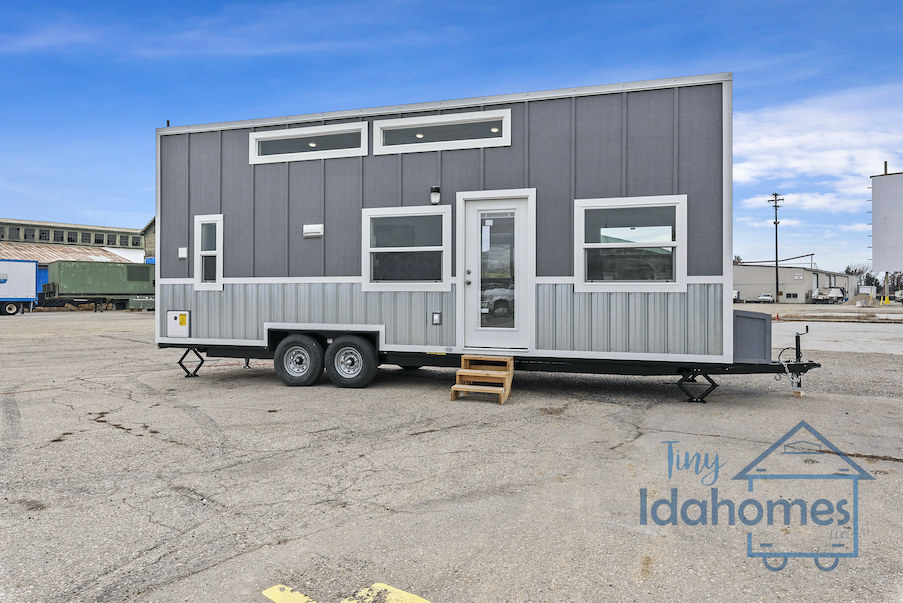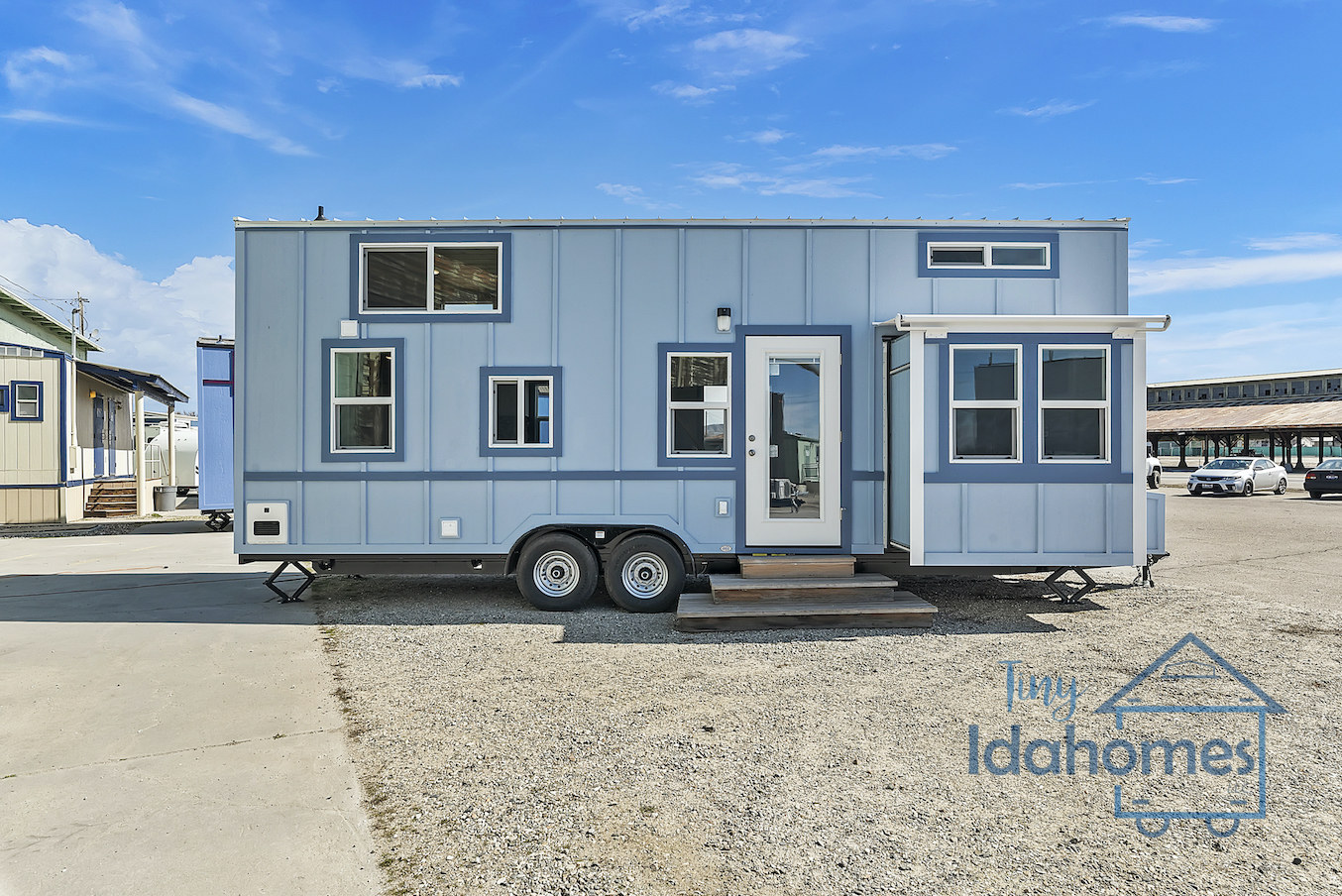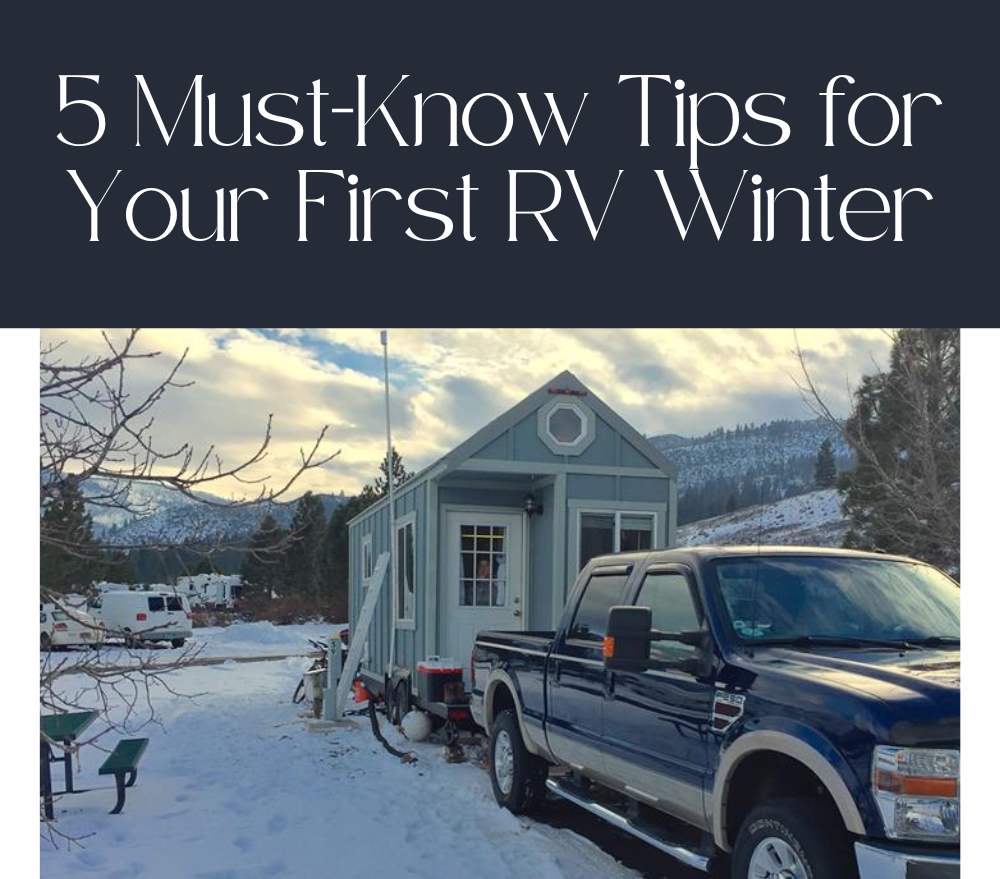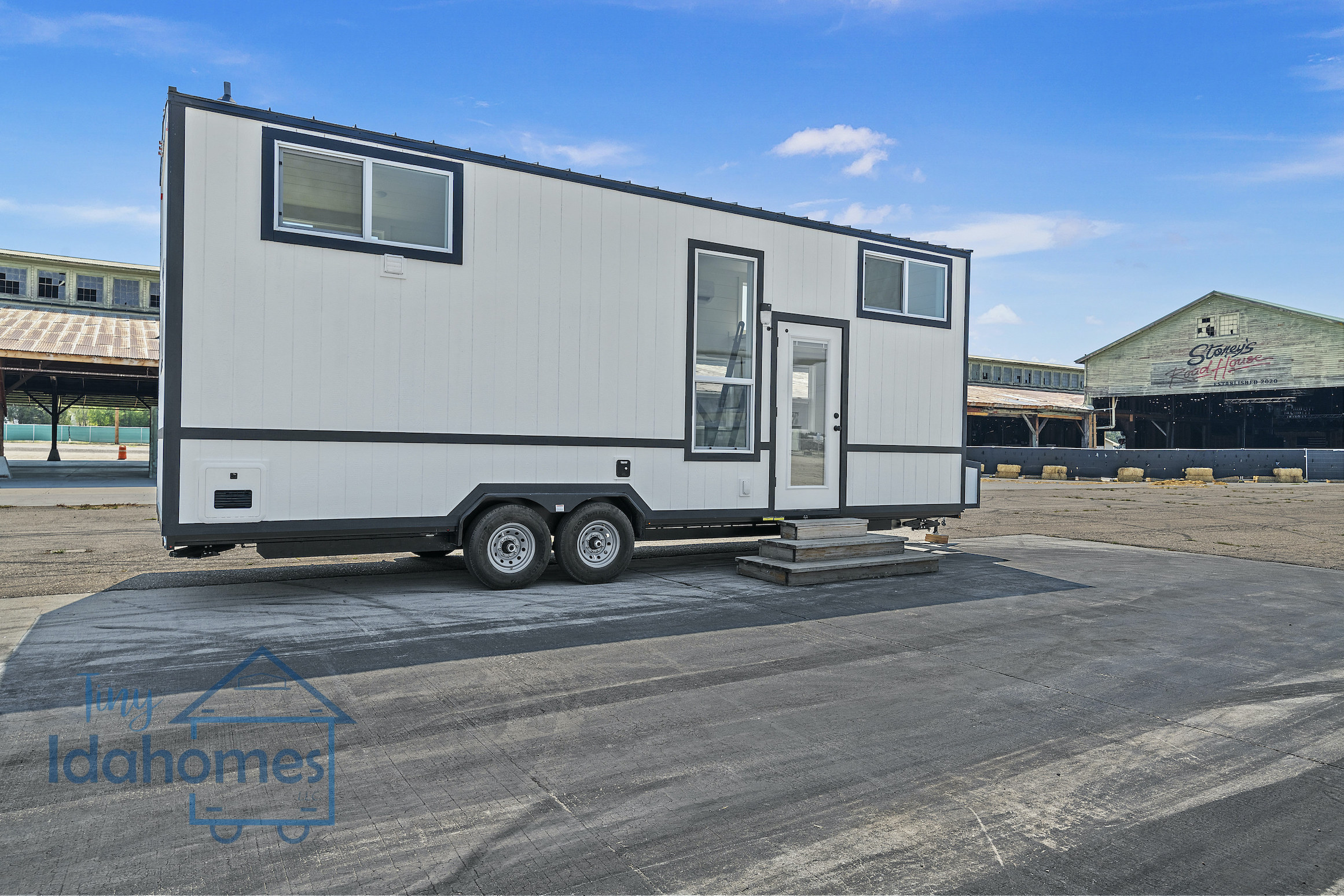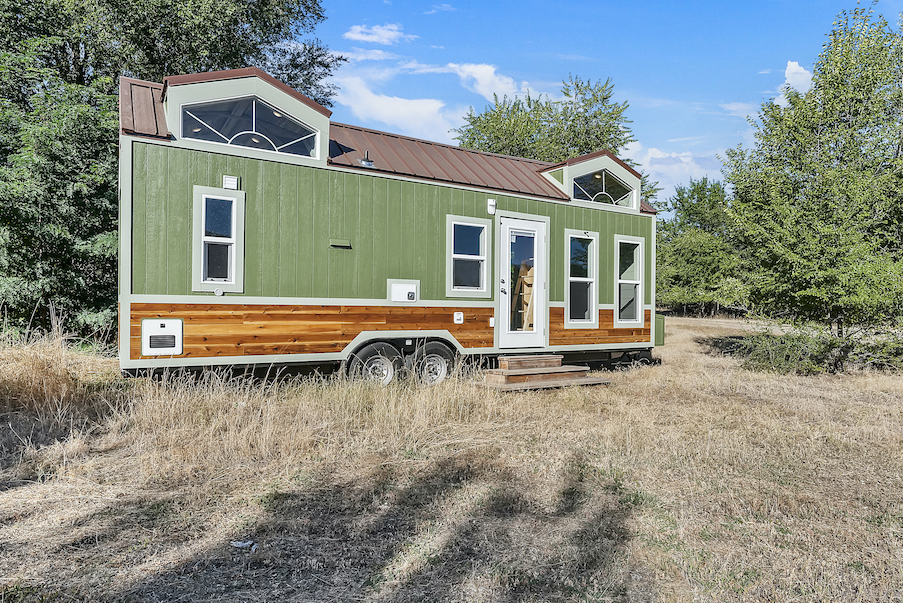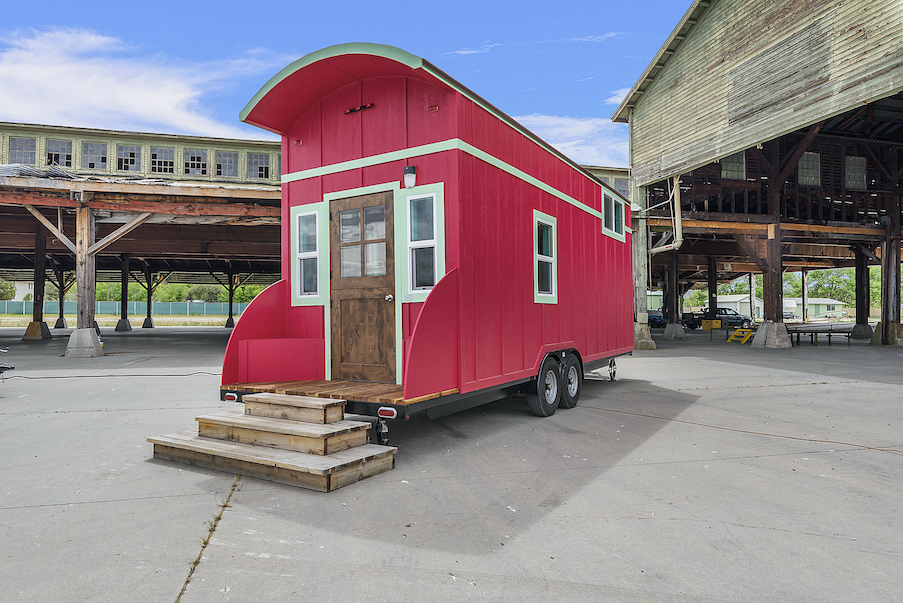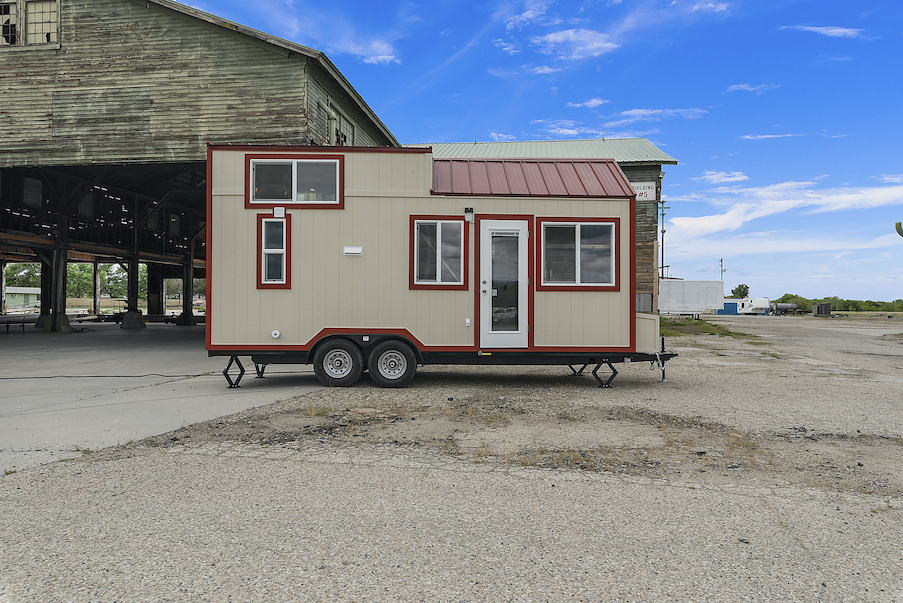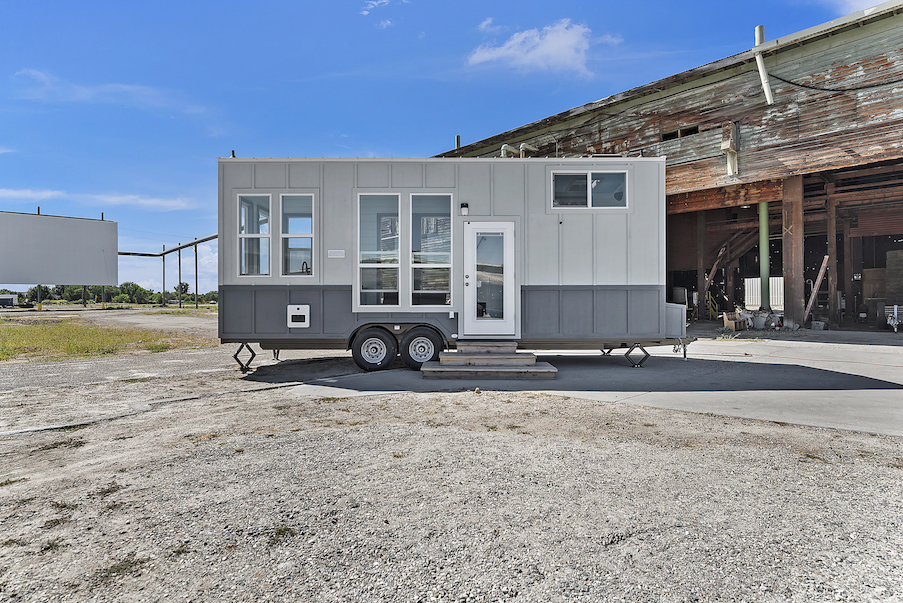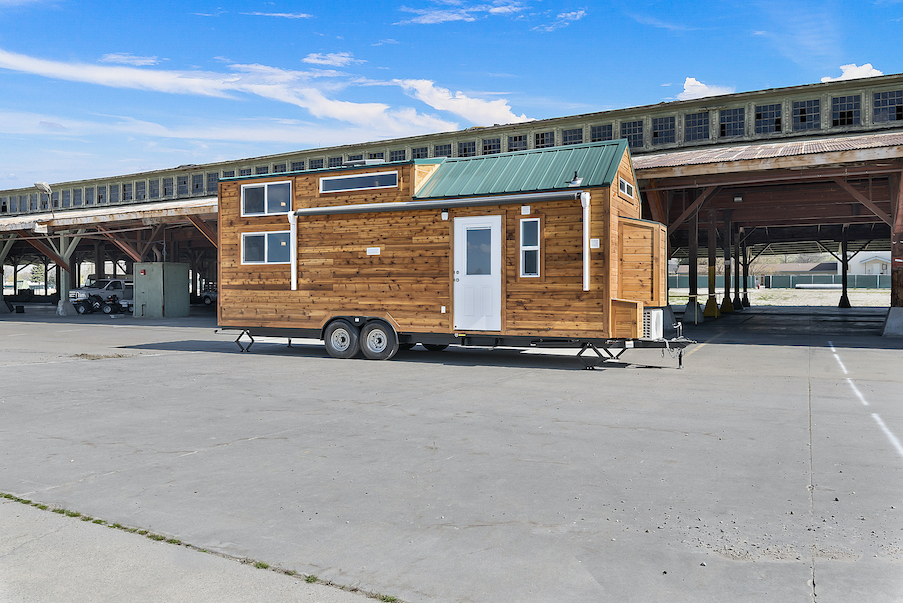
5 Must-Know Tips for Your First RV Winter
May 3, 2022, 2:21 p.m.
Our Tiny Homes can handle all kinds of climates, such as the rainy PNW, scorching AZ summers, and the Chicago winds. Many people ask if our builds can handle harsh winters, and the answer is a resounding YES! However, there are some precautions you must take when RVing in a cold climate. We’ve written this blog to give you an idea of the kinds of things you should be aware of when entering into your first RV winter. Let’s get started!
1. Skirting
Arguably the most important preventative measure you will take for winter is getting your Tiny Idahome skirted. The biggest reason is to protect against a freezing wind chill on the underside of your Tiny Home, which can lead to frozen or broken pipes. There are a few ways you can skirt your Tiny, but the most common way is with foam insulation. You can get this professionally done, or go to your local home supply store and pick out the materials yourself. There’s many DIY videos on YouTube that can help you step-by-step depending on the route you choose to take!
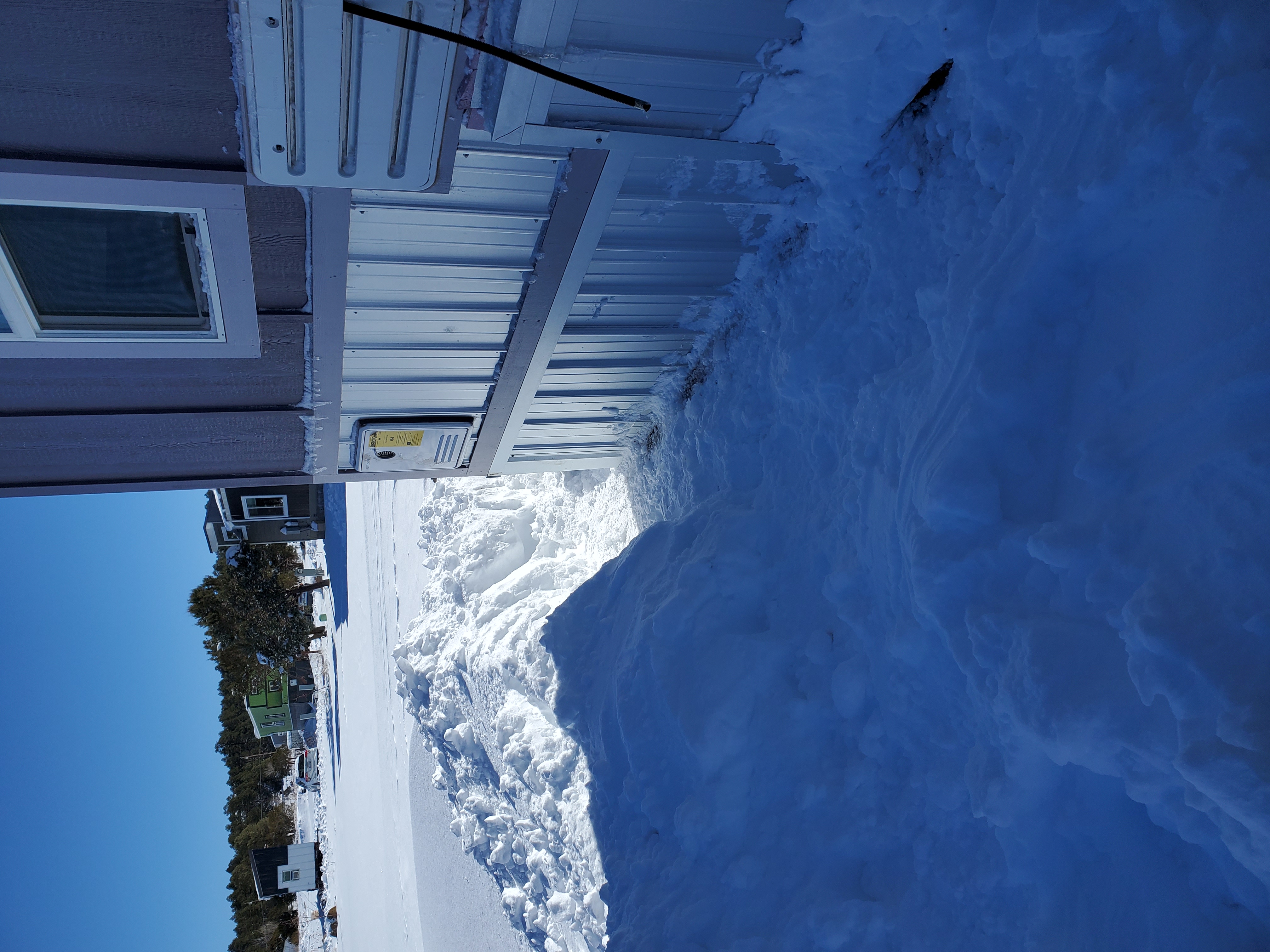
2. Keep track of weather trends
Be sure to check the weather app on your phone, because even with skirting, freezing overnight temperatures can cause a lot of issues for RVs. One of the remedies for this is to get a small space heater for the coldest room in the Tiny Home, which is often the bathroom. You will need to follow the manufacturer’s safety recommendations, but keep it on low in that coldest room to keep things from getting too frozen. During those cold snaps, you should also run your taps at a pencil-thin stream overnight to prevent your water line from freezing.
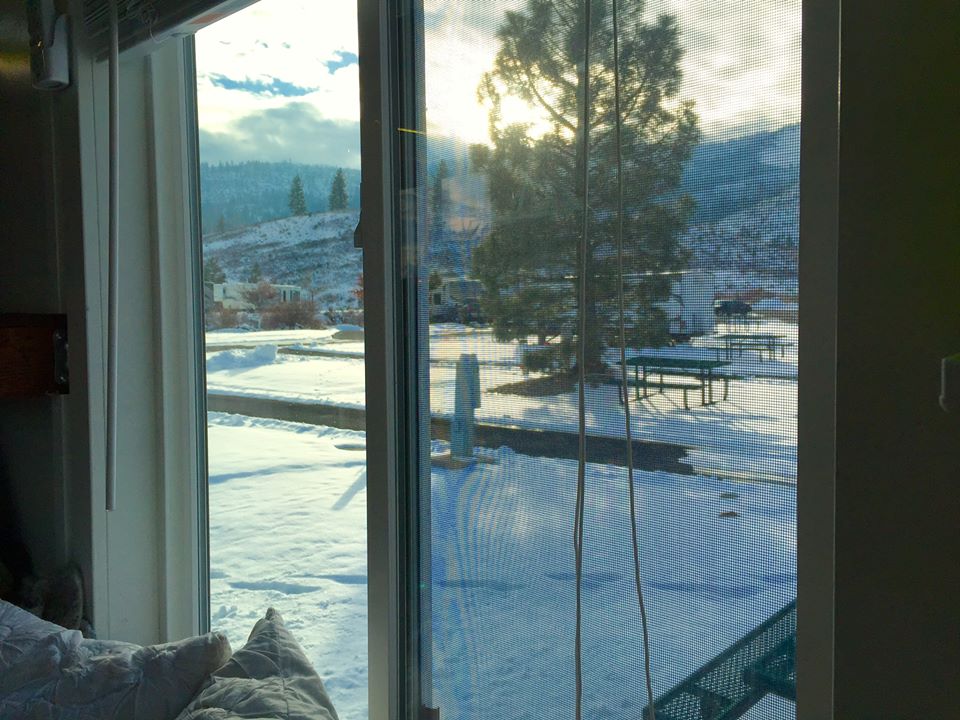
3. Watch out for humidity and condensation
Especially in humid climates, RVs are very prone to condensation issues in the winter. Simple tasks such as boiling water, showering, and even You may notice your windows will develop some condensation - that is a sign the humidity is too high in your RV. Check near the wheel wells, baseboards, windows, and front door, as these are the areas most prone to condensation. If condensation and humidity are left unchecked, mold spores can bloom and quickly spread. The best way to remedy this is to get an indoor humidity monitor, keep the RV warm, and the most important thing - keep air circulating. Fans are your best friend this time of year, as crazy as that may sound. At times, cracking windows less than a centimeter can really help with the humidity as well. If the humidity is persistent, you may need to invest in a dehumidifier.
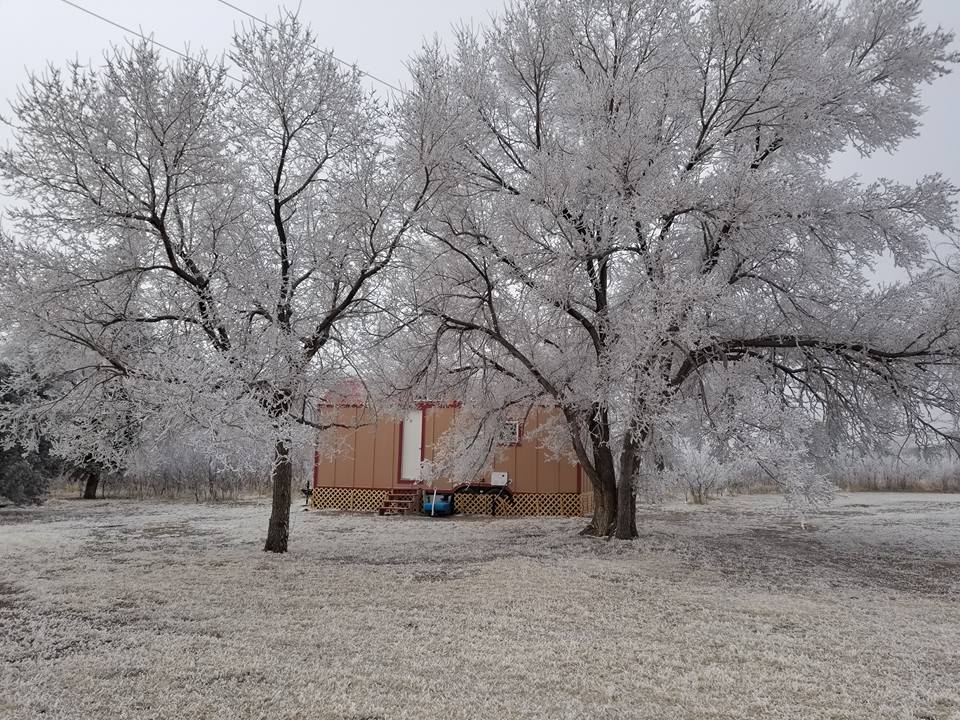
4. Heat tape
A direct approach to preventing freezing pipes is to wrap the drain pipe outside of the RV with heat tape, and to get a heated water hookup hose. The heat tape has a thermostat that regulates the pipe temperature to stay warm enough and prevent freezing. If that’s not enough, you may consider more extreme measures as well, such as wrapping the drain pipe with insulation.
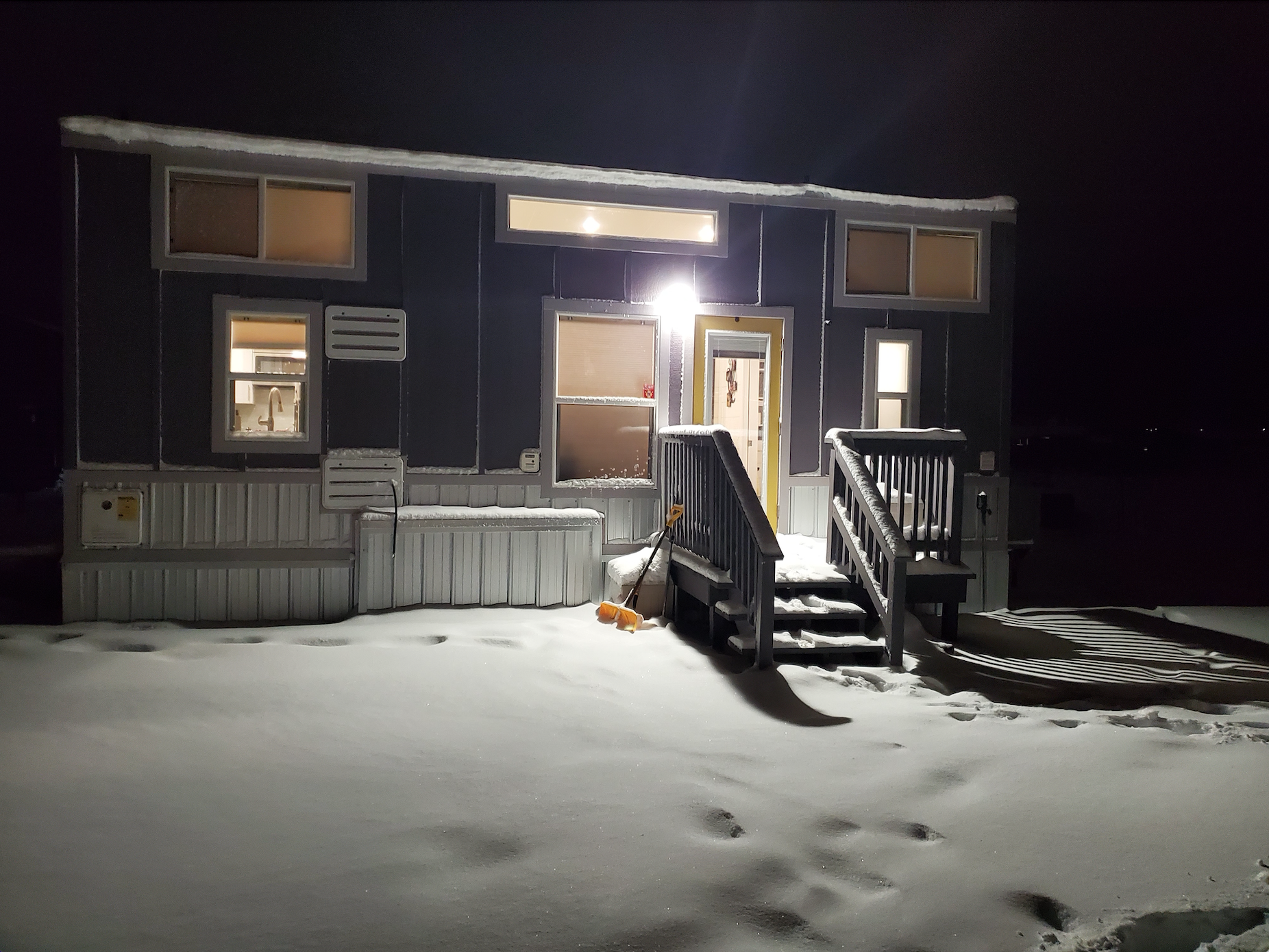
5. If all else fails, drain the RV system
In some of the most extreme cold snaps, some have found it necessary to stock up on water for a few days and drain the RV system completely of water. This is obviously a last resort, but it has worked for some when there were no other reasonable options. We hope this list has helped you prepare for your first RV winter. If you have any questions about weather and our Tiny Homes, contact us with the button below!
